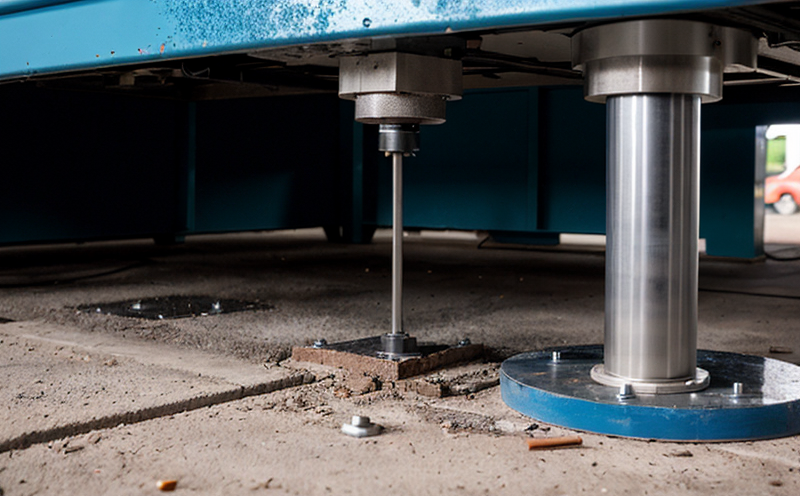ISO 18353 Residual Stress Testing in Ceramic Materials
The ISO 18353 standard provides a comprehensive framework for the testing and evaluation of residual stress within ceramic materials used in additive manufacturing (AM) processes. This service is crucial for ensuring product reliability, performance, and safety across various industries, including aerospace, automotive, and biomedical engineering.
Residual stresses are inherent to the fabrication process of AM parts using ceramics. These stresses can arise from thermal gradients during heating and cooling cycles, differences in material properties, and the mechanical constraints imposed by the build process itself. Understanding these stresses is essential for optimizing manufacturing parameters and ensuring that ceramic parts meet stringent design requirements.
The ISO 18353 standard outlines a series of non-destructive methods to measure residual stress in ceramics. These include X-ray diffraction (XRD), neutron diffraction, and other advanced techniques tailored specifically for the unique properties of ceramic materials. The testing process involves the preparation of representative samples from AM parts, followed by detailed analysis that provides insights into the internal microstructure and its associated stresses.
By adhering to ISO 18353, manufacturers can ensure compliance with international standards while also gaining valuable data on material behavior under varying conditions. This information is invaluable for R&D teams looking to innovate within the AM industry or improve existing processes. The insights gained from these tests help identify areas where improvements are needed, whether it's adjusting build parameters or selecting different ceramic alloys.
The testing process typically begins with sample preparation. Samples must be cut from the AM parts in a manner that preserves their integrity and representative nature of the original part. Once prepared, they undergo non-destructive residual stress measurement using one of several methods outlined in ISO 18353. Each method has its advantages depending on the specific application and material type.
The results obtained from these tests are then analyzed to determine the magnitude and distribution of residual stresses within the ceramic samples. This information is crucial for assessing the potential impact on part performance and durability. For instance, excessive residual stress can lead to cracks or other defects that may compromise the structural integrity of the final product.
Compliance with ISO 18353 not only ensures adherence to international standards but also enhances overall quality assurance efforts within organizations focused on advanced manufacturing technologies like AM. By leveraging this standard, companies can demonstrate their commitment to excellence in material science and engineering practices.
In summary, ISO 18353 residual stress testing plays a vital role in ensuring the reliability and performance of ceramic parts produced through additive manufacturing processes. It provides critical information necessary for optimizing production techniques and meeting stringent industry requirements.
Quality and Reliability Assurance
- Non-destructive testing: Ensures that samples remain intact after analysis, preserving the integrity of AM parts.
- Data accuracy: Provides precise measurements of residual stress levels within ceramic materials.
- Compliance verification: Helps organizations meet international standards and regulations related to AM processes.
The precision and reliability of ISO 18353 testing contribute significantly to the overall quality assurance process. By providing accurate data on residual stresses, this service enables manufacturers to identify potential issues early in the development cycle, thereby reducing costly rework and improving product consistency.
Moreover, compliance with international standards such as ISO ensures that products meet stringent performance criteria, enhancing trust among customers and stakeholders alike. This level of assurance is particularly important for industries where safety and reliability are paramount, such as aerospace or medical devices.
International Acceptance and Recognition
The ISO 18353 standard has gained widespread acceptance across various sectors due to its robustness and applicability. Many leading manufacturers and regulatory bodies recognize the importance of this testing method in ensuring high-quality ceramic parts for AM applications.
Countries around the world have adopted ISO standards as part of their national quality systems, making compliance with these guidelines essential for companies operating internationally. This global recognition underscores the significance of adhering to international best practices when it comes to measuring residual stress in ceramics.
Competitive Advantage and Market Impact
- Innovation: Early detection of issues through ISO 18353 testing allows manufacturers to refine their processes continuously, fostering innovation within the AM industry.
- Cost savings: By identifying and addressing potential problems before they become critical defects, companies can avoid costly repairs or recalls later in the production cycle.
The ability to produce reliable ceramic parts through additive manufacturing is increasingly becoming a key differentiator for businesses operating in competitive markets. Organizations that invest in advanced testing technologies like ISO 18353 not only enhance their reputation but also gain significant advantages over competitors who may not have adopted similar practices.
Furthermore, compliance with international standards helps companies establish themselves as leaders in quality and reliability assurance within the AM community. This recognition can open doors to new opportunities, including collaborations with industry leaders and access to cutting-edge research initiatives.





